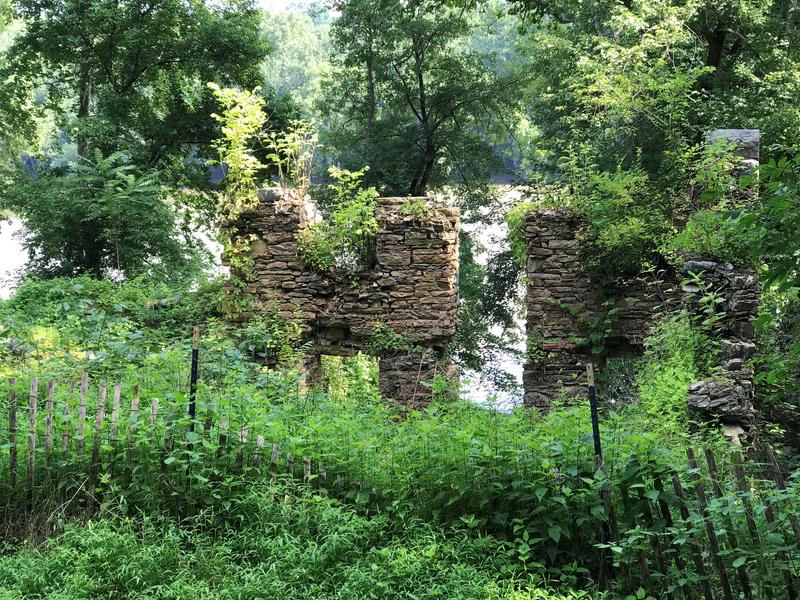Living in the mountains of Appalachia, the nature that surrounds us often becomes a mere backdrop. We expect it to be there, so we forget about it.
In the new book “Mountains Piled Upon Mountains: Appalachian Nature Writing in the Anthropocene,” nearly 50 writers focused on the natural world of Appalachia using place-based fiction, literary nonfiction and poetry.
The current geological age is known as the Anthropocene — the period when human activity has become the dominant influence on climate and the environment.
The writers in the new book from West Virginia University Press, “Mountains Piled Upon Mountains” examined human experience and influence on the mountains that make up Appalachia.
Jessica Cory, the book’s editor, teaches in the English department at Western Carolina University. She grew up in southeastern Ohio, then lived for a while in a very flat geography along the eastern coast. She described a kind of hill-sickness she got in the flat lands, or a longing for that folding geography. It was alleviated when she moved to the mountains of North Carolina.

“I moved out here and just fell in love,” Cory recalled. “Oh, I’m home. I’m home. There are hills, there are shadows. There’s topography. It feels like home.”
Cory said she noticed a shared sense of rootedness and tie to place in the author contributions to the book.
“Everybody seems to have that idea that this is home, this is what home looks like.”
After moving back to Appalachia, Cory had come to notice she couldn’t find a compilation of writings that focused on the overall Appalachian region, as place.
From that seed, “Mountains Piled Upon Mountains” was born.
Moving beyond nature writing, much of the writing in the book discusses issues facing the region.
Ann Pancake is the West Virginia University Humanities Writer in Residence and a contributor to the book.
“I’ve been writing about the natural world in West Virginia for a long time,” Pancake said. “And many people in West Virginia, I would say, have a deep ambivalence about the natural world here. They love it and at the same time, there’s pain about the way that it’s hurt and also the pressure to destroy the place in order to make a living.”
Here’s an excerpt from her contribution:
“Dear West Virginia, what kind of writer would I have been if I hadn’t been raised to love you? Taught to love you by my family and by the culture, by school, and even by church, but taught to love you also (and here taught is too innocent a word: seduced? ensnared?) by the land of you yourself. Pull of you, draw of you, hold of how you won’t let us go, and why, when almost everyone else I know is also decades from their childhood places, I’m about the only one who still calls that place home?
And through you, West Virginia, I have also learned how the ferocity of any love is hotter-fired by threat of loss. To grow up in you, West Virginia, was to be nurtured by what was also continuously being taken away, from the days stood, six years old, in the picture window of our middle-class home and Nicholas County in view of bulldozers stripping a mountain, to the day I stood, thirty years later with another generation of West Virginia children at the turquoise-goo toe of a seeping mountaintop removal valley fill. West Virginia, how profoundly beautiful. How profoundly vulnerable, Loving you accompany to always by witnessing, by bearing up under, your destruction. Clear-cut, strip mine, gas well, chicken factory farm, pipeline, power line, subdivision of second homes, whatever the appetites of people not of this place who don’t it won’t have to look at what was sacrificed for what they have to have.”
Rick Van Noy is another of the roughly 50 contributors. He wrote about the rivers that run through the mountains. And the calming effect they can have.
“Wilderness certainly, I think, sustains us and in various ways enriches us provides a kind of joy,” Van Noy said. “I think those bubbling rivers just provided an endlessness, or repeated cycle.”
Other contributors to “Mountains Piled Upon Mountains” write about experiences from northern Georgia to upstate New York, inviting parallels between a watershed in West Virginia and one in North Carolina. They emphasize connections between Appalachia and more distant locations, emphasizing the need to understand the nature around us.
This article was originally published by West Virginia Public Broadcasting.



